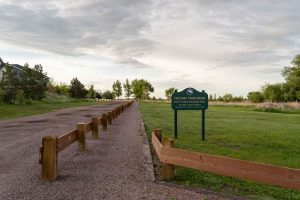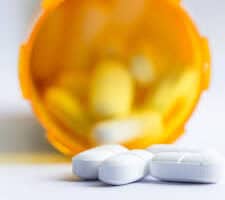Stroke is the fifth most lethal disease and the No. 1 long-term disabler of adults, according to the Stroke Recovery Foundation website.The American Stroke Association defines stroke as a disease that affects the arteries leading to and within the brain. It can be caused either by a clot obstructing the flow of blood to the brain (an†ischemic stroke) or by a blood vessel rupturing and preventing blood flow to the brain (a†hemorrhagic stroke). A TIA (transient ischemic attack), or “mini stroke,î is caused by a temporary clot.According to the American Heart Association website, 80% of strokes are preventable with lifestyle changes.Many strokes are treatable, but the outcome depends on how quickly treatment is received; preferably within three hours of the onset of symptoms to prevent permanent brain damage or death.The American Stroke Association states that people should use the acronym, F.A.S.T, to spot a stroke:
- F†is for facial drooping: Does one side of the face droop or is it numb? Ask the person to smile. Is the person’s smile uneven?
- A†is for arm weakness: Is one arm weak or numb?†Ask the person to raise both arms. Does one arm drift downward?
- S is for speech difficulty:†Is the personís speech slurred?
- T is for†time to call 911
Also, watch for sudden symptoms such as
- Numbness†or weakness of face, arm or leg, especially on one side of the body
- Confusion,†trouble speaking or understanding speech
- Trouble seeing†in one or both eyes
- Trouble walking, dizziness, loss of balance or coordination
- Severe headache†with no known cause
The mobile stroke treatment unitDavid Ornealas, nurse manager with the UCHealth Mobile Stroke Treatment Unit, said the unit started in the Aurora, Colorado, region in January 2016, and went live in Colorado Springs that August. At that time, Ornealas said Colorado had only the third mobile stroke unit in the United States, thanks to Dr. William Jones, University of Colorado School of Medicine and UCHealth neurologist.The MSTU operates on an every other week basis in the two regions, meaning they are in each area 50% of the year and dispatched on average 30 times a month, Ornealas said. The unit operates from 8 a.m. to 8 p.m. only, as they looked at statistics and data of stroke dispatches via 911, and found that through the evening hours, the stroke call volume drastically diminished. ìAlthough strokes can happen any time of the day; unfortunately, for most people, if theyíre having a stroke while sleeping, they donít know it until they wake up,î Ornealas said. ìThe morning hours are when the calls start to come in when they realize something is wrong.îCurrently, the operations boundary for the MSTU is within the Colorado Springs city limits; it does not travel, for example, to Falcon, Peyton or Black Forest, he said. One of the reasons is the time factor. ìIf we are traveling for great distances, we could potentially be doing a disservice to the patient if a traditional ambulance could just drive them to the hospital, rather than keeping them waiting for us,î Ornealas said.The crew consists of a critical care nurse, a CAT scan technologist, a paramedic and an EMT, plus a neurologist who communicates via telehealth with the crew and the hospital where the patient will arrive, he said. The unit has all the equipment needed such as a CT scanner and tPA (a drug that dissolves blood clots) to treat ischemic and hemorrhagic strokes, Ornealas said.In a recent study performed by UCHealth, they found that patients treated with tPA in a mobile stroke unit were nearly two-and-a-half times more likely to have a good outcome ó either no lingering symptoms at all or no significant disability despite symptoms ó than those rushed by ambulance to a hospital, diagnosed and given tPA there. The MSTU neurologist can give the go-ahead for the clinical nurse specialist to administer tPA, as the unit heads to the nearest hospital, he said.Although the MSTU crew is limited by service boundaries, they are available to provide educational opportunities to the community on signs, symptoms and other stroke-related information, Ornealas said. ìWe have had some robust community outreach and education that the mobile stroke team provides when they are waiting for a call,î he said. ìThe big thing we try to tell the community is we can have the most sophisticated equipment and the best staff, but until we get people to recognize the signs and symptoms and not wait to call 911, weíre just basically a big fancy paperweight.îOrnealas said one of the reasons people donít take stroke symptoms seriously is there really isnít pain involved. ìThereís a lot of pain involved with a heart attack, and pain is what grabs our attention,î he said. Symptoms of a stroke are numbness or weakness in the arm, but people tend to find reasons or excuses for why it feels that way, so they ignore the symptoms because they arenít painful, Ornealas said.ìWe would rather people call even if they have a low suspicion and be wrong than have them go to bed and have a stroke in their sleep,î he said.Jon Webb, the division chief for the Falcon Fire Protection District Emergency Medical Services, said the UCHealth stroke ambulance is a specialty ambulance, equipped to perform a CATSCAN on scene and to administer special medications. Webb said at present the ambulance does not respond to calls in the Falcon area, but he encourages the community to call 911 if they think they might be having a stroke and the ambulance and fire department will arrive to assess and take care of them.






